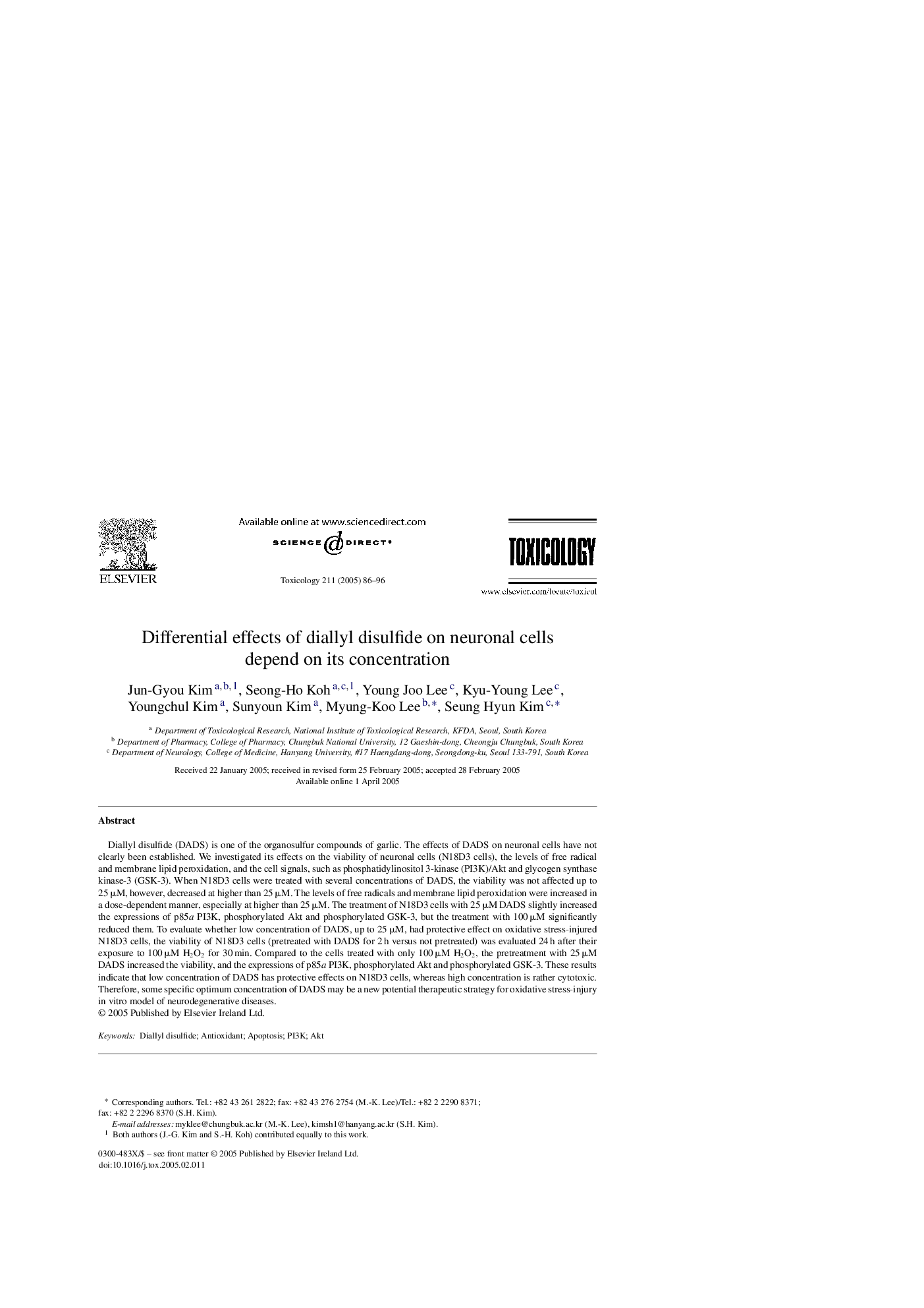| کد مقاله | کد نشریه | سال انتشار | مقاله انگلیسی | نسخه تمام متن |
|---|---|---|---|---|
| 9035016 | 1562445 | 2005 | 11 صفحه PDF | دانلود رایگان |
عنوان انگلیسی مقاله ISI
Differential effects of diallyl disulfide on neuronal cells depend on its concentration
دانلود مقاله + سفارش ترجمه
دانلود مقاله ISI انگلیسی
رایگان برای ایرانیان
کلمات کلیدی
موضوعات مرتبط
علوم زیستی و بیوفناوری
علوم محیط زیست
بهداشت، سم شناسی و جهش زایی
پیش نمایش صفحه اول مقاله

چکیده انگلیسی
Diallyl disulfide (DADS) is one of the organosulfur compounds of garlic. The effects of DADS on neuronal cells have not clearly been established. We investigated its effects on the viability of neuronal cells (N18D3 cells), the levels of free radical and membrane lipid peroxidation, and the cell signals, such as phosphatidylinositol 3-kinase (PI3K)/Akt and glycogen synthase kinase-3 (GSK-3). When N18D3 cells were treated with several concentrations of DADS, the viability was not affected up to 25 μM, however, decreased at higher than 25 μM. The levels of free radicals and membrane lipid peroxidation were increased in a dose-dependent manner, especially at higher than 25 μM. The treatment of N18D3 cells with 25 μM DADS slightly increased the expressions of p85a PI3K, phosphorylated Akt and phosphorylated GSK-3, but the treatment with 100 μM significantly reduced them. To evaluate whether low concentration of DADS, up to 25 μM, had protective effect on oxidative stress-injured N18D3 cells, the viability of N18D3 cells (pretreated with DADS for 2 h versus not pretreated) was evaluated 24 h after their exposure to 100 μM H2O2 for 30 min. Compared to the cells treated with only 100 μM H2O2, the pretreatment with 25 μM DADS increased the viability, and the expressions of p85a PI3K, phosphorylated Akt and phosphorylated GSK-3. These results indicate that low concentration of DADS has protective effects on N18D3 cells, whereas high concentration is rather cytotoxic. Therefore, some specific optimum concentration of DADS may be a new potential therapeutic strategy for oxidative stress-injury in vitro model of neurodegenerative diseases.
ناشر
Database: Elsevier - ScienceDirect (ساینس دایرکت)
Journal: Toxicology - Volume 211, Issues 1â2, 1 July 2005, Pages 86-96
Journal: Toxicology - Volume 211, Issues 1â2, 1 July 2005, Pages 86-96
نویسندگان
Jun-Gyou Kim, Seong-Ho Koh, Young Joo Lee, Kyu-Young Lee, Youngchul Kim, Sunyoun Kim, Myung-Koo Lee, Seung Hyun Kim,